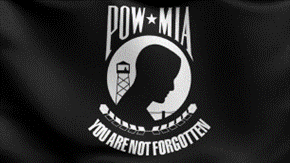Author’s Note: Research is credited to National Day Calendar, Defense POW/ MIA Accounting Agency, and U.S. Department of Veterans Affairs.
Our country would not exist if it weren’t for the soldiers who fought for it.
Starting back in the Revolutionary War (1775 – 1783), and throughout American history, soldiers have fought, died and been captured for the country they stand for.
Many of these soldiers never returned home, and many of those who did live to see their families again were forever changed.
Some families never knew what happened to their soldiers. They were listed as “missing in action,” with no clear way to find out what exactly happened to them—they are missing.
Other soldiers lived in prisoner of war camps if they were captured. Many prisoners died in such camps.
On the third Friday of September, the United States honors all soldiers who have been a prisoner of war or missing in action. This year, National POW/MIA Day is observed on Sept. 20.
The POW/MIA flag was first an idea in 1971. Michael Hoff was a Vietnam soldier and was listed as missing in action. His wife wanted a memorial, not just for her husband, but for all soldiers whose fates were unknown during battle.
The black-and-white silhouette of a soldier behind barbed wire, with a guard tower looming in the background, was the sketch of a former World War Two pilot named Newt Heisley. Legend has it that the silhouette was a sketch of his own son, who contracted hepatitis before he could ship out to Vietnam.
On the third Friday of September, the United States honors all soldiers who have been a prisoner of war or missing in action. This year, National POW/ MIA Day is observed on September 20.
The national holiday was first established in 1979. U.S. President Jimmy Carter signed the first proclamation commemorating a day of reflection and honor for those who served, many who never came home, and those who lived—and died—in POW camps.
Three years after the first observance of the holiday, the POW/ MIA flag became the first flag to fly at the White House that was not the Stars and Stripes.
The flag was designated officially by Congress in 1990.
Since then, each succeeding president has observed the same proclamation, with ceremonies at the Pentagon in Washington, D.C., and also at other state capitals and military institutions. The ceremonies feature each branch of the military and allow for soldiers and their families to remember and honor.
Even without a member of the military in your life, or if your soldier has returned home safely, respecting and remembering those who gave their all is the least we can do. They are willing to give their very lives for our freedom that we often take for granted. On National POW/MIA Day, we can take the opportunity to honor the soldiers who really did give their all.
